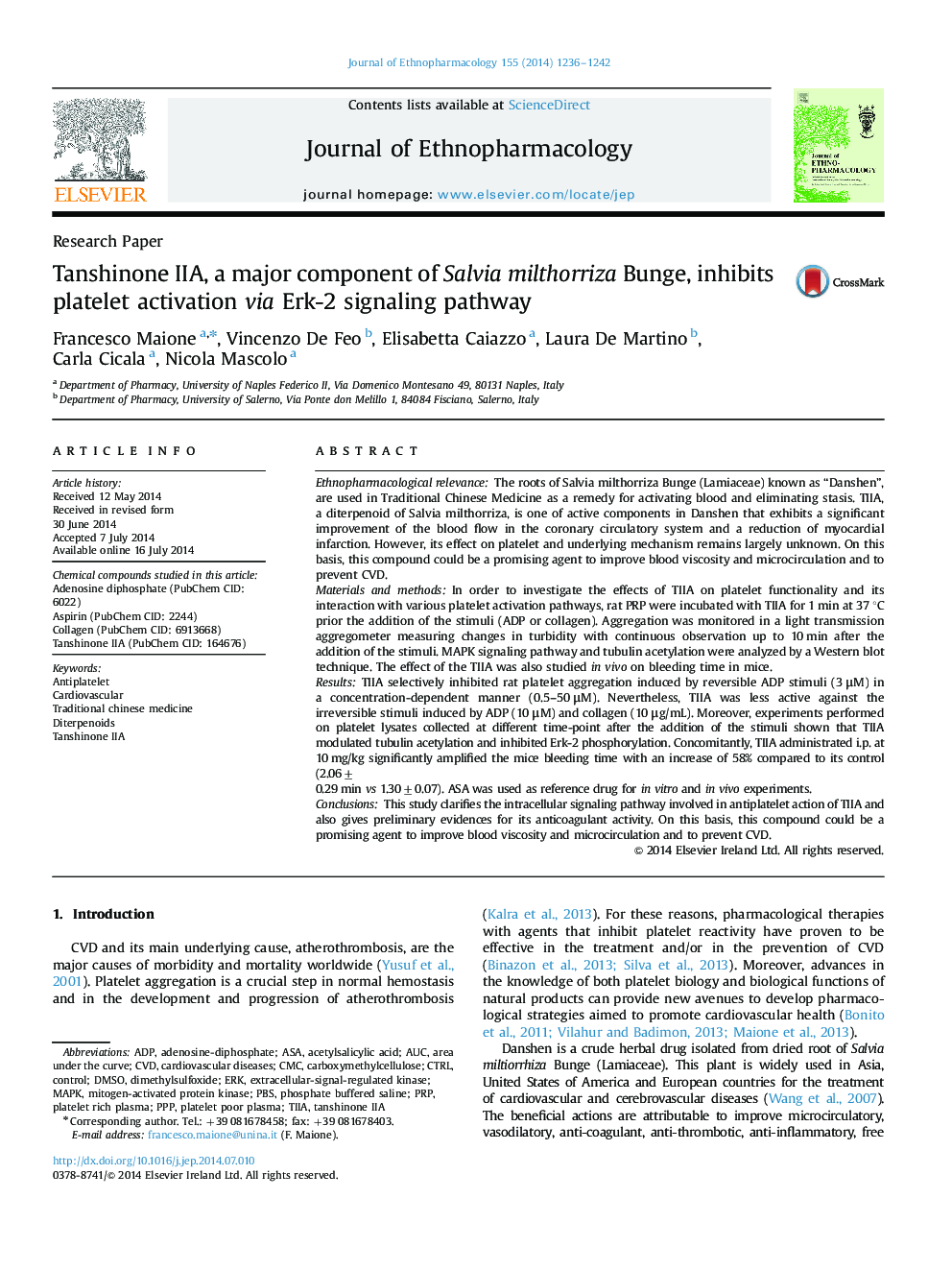| Article ID | Journal | Published Year | Pages | File Type |
|---|---|---|---|---|
| 5836111 | Journal of Ethnopharmacology | 2014 | 7 Pages |
Ethnopharmacological relevanceThe roots of Salvia milthorriza Bunge (Lamiaceae) known as “Danshen”, are used in Traditional Chinese Medicine as a remedy for activating blood and eliminating stasis. TIIA, a diterpenoid of Salvia milthorriza, is one of active components in Danshen that exhibits a significant improvement of the blood flow in the coronary circulatory system and a reduction of myocardial infarction. However, its effect on platelet and underlying mechanism remains largely unknown. On this basis, this compound could be a promising agent to improve blood viscosity and microcirculation and to prevent CVD.Materials and methodsIn order to investigate the effects of TIIA on platelet functionality and its interaction with various platelet activation pathways, rat PRP were incubated with TIIA for 1 min at 37 °C prior the addition of the stimuli (ADP or collagen). Aggregation was monitored in a light transmission aggregometer measuring changes in turbidity with continuous observation up to 10 min after the addition of the stimuli. MAPK signaling pathway and tubulin acetylation were analyzed by a Western blot technique. The effect of the TIIA was also studied in vivo on bleeding time in mice.ResultsTIIA selectively inhibited rat platelet aggregation induced by reversible ADP stimuli (3 μM) in a concentration-dependent manner (0.5-50 μM). Nevertheless, TIIA was less active against the irreversible stimuli induced by ADP (10 μM) and collagen (10 μg/mL). Moreover, experiments performed on platelet lysates collected at different time-point after the addition of the stimuli shown that TIIA modulated tubulin acetylation and inhibited Erk-2 phosphorylation. Concomitantly, TIIA administrated i.p. at 10 mg/kg significantly amplified the mice bleeding time with an increase of 58% compared to its control (2.06±0.29 min vs 1.30±0.07). ASA was used as reference drug for in vitro and in vivo experiments.ConclusionsThis study clarifies the intracellular signaling pathway involved in antiplatelet action of TIIA and also gives preliminary evidences for its anticoagulant activity. On this basis, this compound could be a promising agent to improve blood viscosity and microcirculation and to prevent CVD.
Graphical abstractDownload high-res image (149KB)Download full-size image
